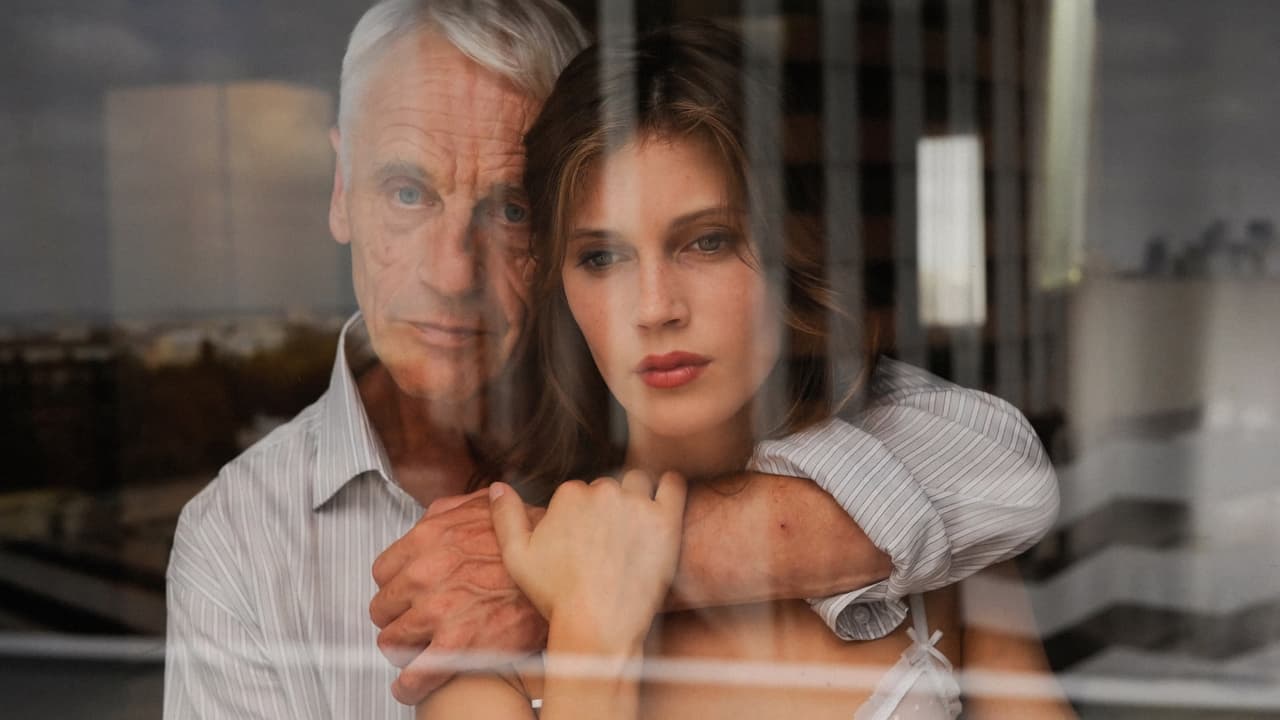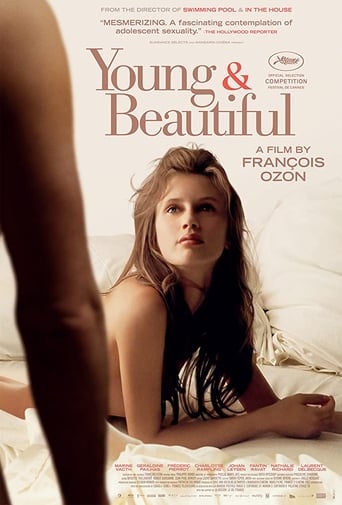

Tied for the best movie I have ever seen
... View MoreWhat a freaking movie. So many twists and turns. Absolutely intense from start to finish.
... View MoreThe joyful confection is coated in a sparkly gloss, bright enough to gleam from the darkest, most cynical corners.
... View MoreThis is a small, humorous movie in some ways, but it has a huge heart. What a nice experience.
... View MoreThe Nouvelle Vague originated from an ideology postulated in Cahiers du Cinéma in the '50s, specifically the idea that film could no longer be ruled by its narrative (which was often an adaptation of other media, particularly critically-acclaimed literary works) but should be completely dictated by the director or, as he was called when fulfilling this role, the 'auteur'. Thus the reactionary countermovement of the Nouvelle Vague proposed a sudden shift from narrative to formal and experimental factors as indicators of quality. Concerning this focus on the formal aspect was the preference of the Cahiers du Cinéma Critics for the mise-en-scène, namely the long take and deep-focus aesthetic (Cook, 2004; Gibbs, 2002).Indeed, the auteur theory or politique des auteurs continues to dominate in the discourse surrounding film, especially in journalistic circles. However, auteur theory has evolved since the Nouvelle Vague, as Kate Ince has illustrated in her analysis of François Ozon; it is no longer the aesthetical techniques in a director's body of work but recurring themes that identify an 'auteur' (2008). The change in meaning of 'auteur' is a clear index of the extent to which the 'broken thread' as Olivier Assayas called it has been reattached. In view of Ince's analysis, which uses the concepts of the Cahiers du Cinéma critics in a diametrical way, it seems that the abandonment of the 'nouvelle vague auteur' has fully disseminated in the academic discourse of film studies. The director is no longer seen as being able to dictate every aspect of the film production process, the only thing he has complete control over is the thematic content (Maule, 2008). As a consequence of the reinterpretation of the auteur theory, content analyses have become more commonplace leading to a declination in the number of formal analyses. For the purpose of complementing Ince's analysis of Ozon's work this essay will perform a close stylistic analysis of the film style in Jeune & Jolie (2013). In addition, it will provide empirical evidence to the claim that the post-nouvelle vague directors reintegrated and re-evaluated the narrative film tradition and style.Consequently, Assayas asserted that directors such as André Téchiné, Maurice Pialat, Jean Eustace and other post-nouvelle vague directors "re-attached the broken thread". In other words they reconciled with the film tradition that was rejected by the Cahier du Cinéma critics. Thus, filmmakers were no longer limited to a long take, deep-focus or, alternatively, an experimental film style. By adapting the existing stylistic tactics, which were institutionalised during the first half of the 20th century, films could once again be a medium to convey narratives.The methodology of the stylistic analysis is rooted in the cognitive film theory of David Bordwell, who proposed an empirical way of analysing the formal aspects of film in Figures Traced in Light. This essay will mainly utilise concepts from the first chapter, titled 'Staging and Style'. Firstly, Jeune & Jolie is created utilising the continuity editing of classical Hollywood, what Bordwell has postulated as the system of editing that least obstructs the viewer in his construction of the narrative while watching the film (1985). Since Ozon opts for this mode of editing it seems evident that he puts more emphasis on the narrative than on the formal aspect of his film. In the second place, Ozon utilises the traditional schemata of opening a scene with an establishing shot, followed by a recurring shot-reverse-shot scheme in which the major participants in the conversation appear alone in frame or is seen over the shoulder of another character (Bordwell, 2005). He uses the schemata for 18 scenes throughout Jeune & Jolie and therefore it constitutes the large part of all poly- and dialogues. Bordwell has noted that this schemata is one of the oldest, most institutionalised and accordingly the most understood method of showing a scene involving dialogue. Thus, once again Ozon elects to emphasize conveying the narrative instead of experimenting with the film form. Thirdly, the characters in Ozon's film dominate the frame and direct the camera, owing to the absence of any open frames; either montage or camera movement reframes the main character when he/she is about to leave the frame. This is most pronounced with the protagonist Isabelle, played by Marine Vacth. The way she is framed differs from the mood of the scene, generally falling into three major categories: BCU or CU for the emotional intense scenes, VLS or LS to show her progressing alienation from her environment and personal relationships, and lastly medium shots for neutral scenes. As a final point, Ozon incorporates not only the film style of the pre-nouvelle vague French Cinema, but also the whole of Western film tradition, dating back to the beginning of the 20th century. This is logical given the way the solution to a specific staging problem is passed on from filmmaker to filmmaker on a global scale, as western films are distributed throughout the entire Western world. Returning to the insistence of Ince that Ozon is an auteur on the basis of his content, this limited stylistic analysis has proven that he does not assert his personal mark on the aesthetic of the film. However, Ince has correctly concluded that Ozon dictates the themes in his film, leading him to be the "first mainstream queer filmmaker" (2008, p. 31). To conclude, in the contemporary French film industry an auteur is no longer determined by his style but by the recurring themes in his oeuvre. Film style has once again become a universal tool to help immerse the audience in the film and convey the narrative of the director.Bordwell, D. (1985). Narration in the fiction film: London, Routledge 1985.Bordwell, D. (2005). Staging and Style Figures traced in light : on cinematic staging (pp. 1-42). Berkeley; London: University of California Press.Cook, D. A. (2004). A history of narrative film (4th ed.). New York: W.W. Norton.Gibbs, J. (2002). Mise-en-scène : film style and interpretation. London: Wallflower.Ince, K. (2008). François Ozon's cinema of desire. In K. Ince (Ed.), Five directors : auteurism from Assayas to Ozon (pp. 157): Manchester University Press.Maule, R. (2008). The Difficult Legacy of the Nouvelle Vague: Olivier Assayas and French Film Authors at the End of Auteurism Beyond Auteurism: New Directions in Authorial Film Practices in France, Italy and Spain since the 1980s (pp. 81-105). Bristol: Intellect.
... View MoreWe walk a familiar path with this one. I've seen it before in a few other resembling films, Elles, Student Services. Thank god it changes track, second half, the better half, and heads into a much more dramatic direction, though again, with some familiaritie's along the way. We see her, from the opening frame, through simulated binocular vision sun baking on the quiet ocean shore, little brother perving from above, which brought me back to my childhood, while vacationing. Then we see her bra less, and it is a beautiful sight, I must admit, and there are some other nice ones later on, we're generously afforded. She does it with her first love, pre turning seventeen, before we're back in the big smoke, and we cut to the b.s. to see our hot Isabelle (Veitch) heading to the door of a 70's john, who becomes her main one. A tragic event later on, during a session of passionate, loveless sex, brings to the mind an exact same scene from the shallow Slovenian Girl, years earlier. Veitch of course gets addicted, where her Mum, and stepdad are oblivious, until the aftermath of that tragic event, and from here, the film improves, gathering a lot of spice, where I for one was thankful. Through all of this, Veitch acts love repressed, which were led to believed, mostly the catalyst was her former holiday love she lost her virginity too. Veitch is hot and there are some quite raunchy scenes, one involving oral with her and her main old john, prior to his carking day, but nothing too explicit, some eye oglers will be disappointed. I kind of got a bit more what I expected from what I thought would be again, a shallow in the life of a sex student film, although there is still of shallowness there. It's final scene was beautifully thought provoking, featuring a fine actress, donning a bad wig. The relationship between sister, and little brother I really liked, where the stepdad character was written well. All in in, YAB is an enjoyable art house adult drama, kind of ambiguously erotic, but Veitch is something to eat up. Kind of hauntingly music score attached.
... View MoreAs truly beautiful as she might be, it is not enough just to watch her on screen for ninety-five minutes, looking forlorn and pretty much totally bored.. (as were most all of us) for most of the entire time. With a better script and directing, it maybe would have amounted to something more than just a gorgeous teenager working as a high-end call girl. She does appear to have the acting talent (along with that amazing allure), but it'll have to be proved in another work. The rest of the cast is solid, and production values are good. It all boils down to a very thin storyline, with the one big question that never really gets close to being answered. Otherwise, a good portion of beautiful females out there would be selling themselves for no particular reason.
... View MoreYou could sum up much of the French director François Ozon's work as being about young people discovering sex and portraying it frankly. So it is not surprising if a capsule description of an Ozon film makes it sound titillating and exploitive. SWIMMING POOL, his most seen work in the U.S., told the story of a lush adolescent spending the summer by a backyard pool. This sounds, and, up to a point, is, prurient. But Ozon is a master of suspense, not of danger as it approaches, but of what he is really getting at. For all the skin in the game of SWIMMING POOL, it turned out to be a smart little movie about the literary imagination and the social construction of attractiveness. It was, in effect, a thematic thriller.His current work chronicles the life of a gorgeous teenager who moonlights as a call girl. The promoters of YOUNG AND BEAUTIFUL make sure you know this, and Ozon is aware that it is effective as cinema to start off by giving you just enough of what you expect to draw you in. It opens with the teen described in ... Read more at http://osburnt.com/young-and-beautiful/
... View More